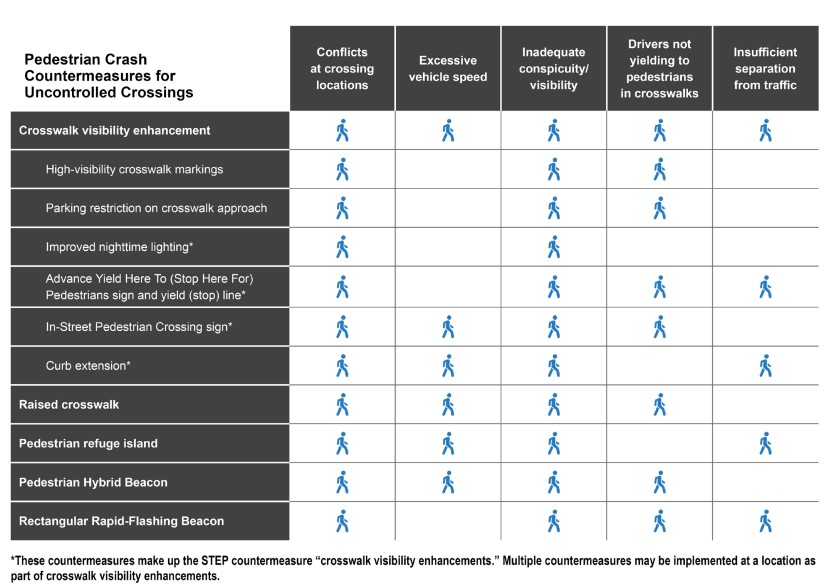19.6.2 Intersection Crossing Treatment Decision-Making Framework
There are many factors that can affect roadway crossing opportunities for pedestrians, including motorist approach speeds and volumes, motorist stopping and yielding behavior, roadway configuration, types of vehicles, the volume and assertiveness of crossing pedestrians, the amount of sight distance that can be achieved at the crossing location, and other factors. These factors will also vary based on time of day or day of the week, seasonally, or due to special events.
Pedestrian crash risk increases as traffic volumes and operating speeds increase and motorist stopping and yielding decreases. To mitigate locations with increased crash risk, countermeasures which increase motorists stopping and yielding, increase gaps, or reduce pedestrian exposure should be considered to facilitate the pedestrian crossing.
The
identifies a range of potential countermeasures which have been shown to achieve improved pedestrian safety at uncontrolled crossings.
includes an extensive matrix and list of countermeasures which have been found to be effective for improving pedestrian safety at uncontrolled crossing relative to specific combinations of roadway geometry and traffic operating conditions. This table provides an initial set of countermeasures options to consider. Not all countermeasures listed within the cell may be necessary to achieve the desired safety goals, however, there are often crossings where the application of multiple countermeasures can be beneficial such as the provision of a marked crosswalks, RRFB, and a crossing island to improve crossing opportunities at multi-lane roadways operating at moderate speeds. On lower speed, lower volume roadways, the application of a marked crosswalk with a complementary pedestrian crossing warning sign may be sufficient where existing night-time lighting levels are adequate.
can be used in conjunction with
to evaluate the potential for a countermeasure to address common safety issues.
Other resources which should be consulted to review potential countermeasures not included in these figures or within this guide which may be effective include:

Figure 19-24A: Pedestrian Safety Countermeasures Based on Roadway Configuration and Posted Speed Limits and Annual Average Daily Traffic.

Figure 19-24B: Countermeasure Effectiveness for Common Safety Issues